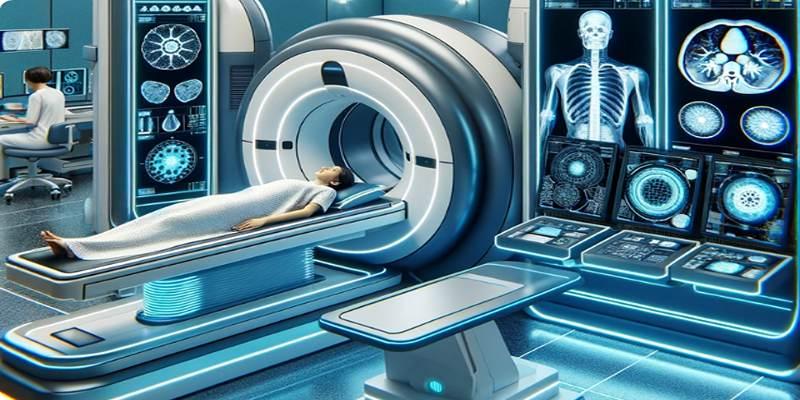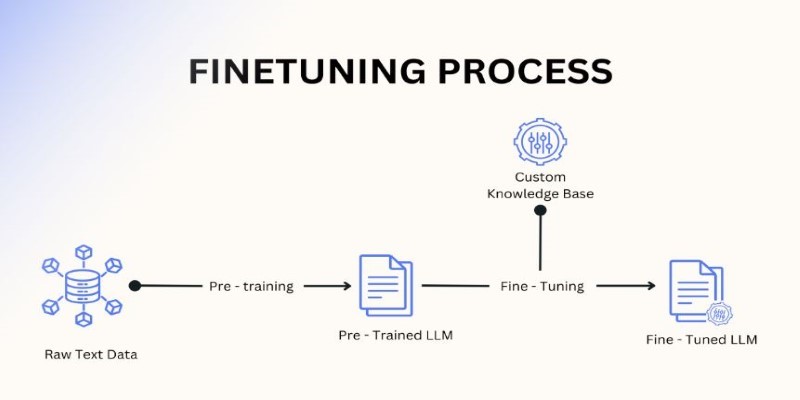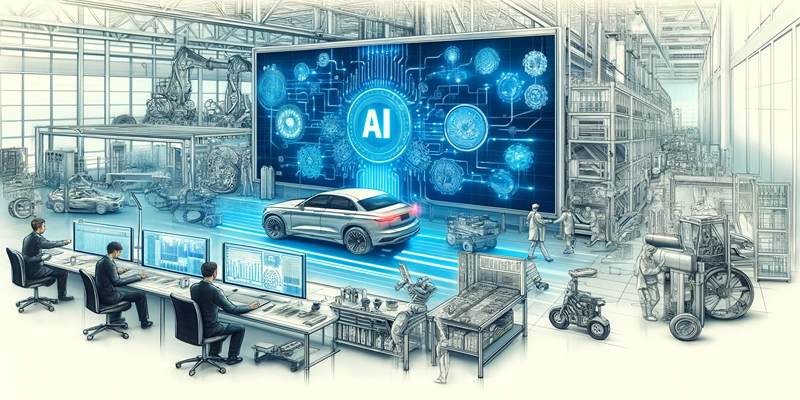In recent years, Artificial Intelligence (AI) has made a tremendous impact across various industries, and healthcare is no exception. One of the most significant advancements has been in the field of medical imaging. AI is revolutionizing how doctors interpret images, making the process faster more accurate, and ultimately improving patient outcomes. This post will explore how AI is enhancing medical imaging, its benefits, challenges, and what the future holds for this technology in healthcare.
What is AI in Medical Imaging?
When machine learning algorithms and deep learning methods are used to look at medical images like X-rays, CT scans, MRIs, and ultrasounds, this is called AI in medical imaging. These algorithms can see patterns in pictures that a human eye might miss. It makes it easier for doctors to find and treat diseases.
AI systems are taught to find problems using huge amounts of medical data. They can then help doctors make diagnoses and even guess what health risks might happen in the future. Medical imaging AI speeds up and improves the accuracy of diagnoses by automating picture analysis. It lets doctors decide on treatments more quickly.
How AI Enhances Diagnostic Accuracy
AI's ability to improve diagnostic accuracy is one of its main benefits in medical images. AI-powered tools can analyze medical images with remarkable precision, often detecting even the smallest anomalies that might go unnoticed by a radiologist. Here’s how AI improves diagnostic accuracy:
- Early Detection: AI can detect signs of disease, such as tumors or fractures, in the early stages when they are most treatable.
- Reduction of Human Error: While radiologists are highly skilled, they are still susceptible to fatigue and errors. AI algorithms can assist in reducing these mistakes, ensuring more accurate readings.
- Consistency: AI can provide consistent results, unaffected by the day-to-day variation in human performance, such as stress or exhaustion.
Artificial intelligence is used to find breast cancer, for instance. Deep learning models look at scans for signs of tumors that a person might miss. It speeds up the process of finding and treating problems, which could save lives.
Increasing Efficiency in Healthcare

AI not only improves diagnostic accuracy but also enhances the efficiency of healthcare systems. By automating the analysis of medical images, AI reduces the time needed to process and interpret these images, which can lead to:
- Faster Results: AI can analyze large sets of images in a fraction of the time it would take a human, leading to faster diagnosis and treatment planning.
- Improved Workflow: AI tools can help radiologists prioritize urgent cases, ensuring that critical patients receive attention first.
- Cost Reduction: With quicker image analysis and fewer errors, healthcare systems can cut down on the costs associated with re-diagnoses, patient wait times, and unnecessary procedures.
Moreover, the integration of AI in hospitals and clinics reduces the workload for healthcare professionals, allowing them to focus more on patient care rather than spending excessive time on image analysis.
Applications of AI in Different Medical Imaging Modalities
AI is being applied in various types of medical imaging and is showing promising results across a broad range of areas. Let’s take a look at how AI is improving some key modalities:
X-rays
X-rays are one of the most common and oldest imaging technologies used in healthcare. AI algorithms help to interpret X-ray images more accurately, identifying abnormalities such as bone fractures, infections, and lung conditions. AI in X-ray imaging is particularly useful in detecting diseases like pneumonia, tuberculosis, and lung cancer at early stages.
CT Scans
CT scans provide cross-sectional images of the body and are used to diagnose conditions such as cancers, injuries, and vascular diseases. AI tools can assist in detecting signs of tumors, organ abnormalities, and internal bleeding, making it easier for doctors to analyze detailed CT scan images quickly and accurately.
MRIs

MRI scans provide high-resolution images of soft tissues, making them vital for diagnosing neurological diseases, heart conditions, and musculoskeletal issues. AI enhances MRI analysis by identifying subtle changes in tissue that may be indicative of early-stage diseases, including brain tumors, multiple sclerosis, and muscle injuries.
Ultrasounds
Ultrasound is commonly used for monitoring pregnancies, diagnosing heart conditions, and assessing organ health. AI-driven ultrasound technology can help in early fetal abnormality detection, heart disease diagnosis, and assessing liver or kidney conditions.
Benefits of AI in Medical Imaging
The integration of AI in medical imaging brings numerous benefits to the healthcare industry. Let’s summarize these key advantages:
- Speed: AI tools significantly reduce the time needed to process and analyze medical images, leading to quicker diagnoses.
- Cost-Effectiveness: Automating routine image analysis allows healthcare facilities to operate more efficiently, reducing operational costs.
- Scalability: AI solutions can be implemented across various healthcare settings, from large hospitals to small clinics, making advanced diagnostic tools more accessible.
Challenges in Implementing AI in Medical Imaging
Despite its many benefits, there are some challenges associated with the implementation of AI in medical imaging. These include:
- Data Privacy Concerns: Handling sensitive medical data raises concerns about privacy and the risk of cyberattacks. Ensuring that AI systems are secure is critical.
- Training and Integration: AI systems need to be trained using large datasets, which requires significant resources. Integrating AI into existing hospital systems also requires time and effort.
Despite these challenges, AI’s potential to improve healthcare is vast, and ongoing research and development are helping address these barriers.
Conclusion
AI in medical imaging is transforming healthcare by improving diagnostic accuracy, increasing efficiency, and enabling faster decision-making. From early detection of diseases to enhancing the workflow of healthcare professionals, AI is revolutionizing the way medical images are analyzed. While there are challenges in implementing AI systems, the ongoing advancements in this technology make it an exciting development for the future of healthcare. As AI continues to progress, you can expect even more breakthroughs that will further enhance patient care and outcomes.










